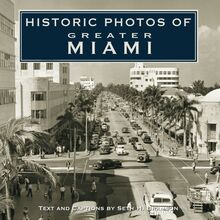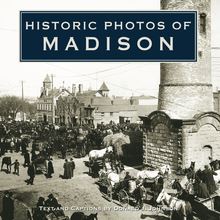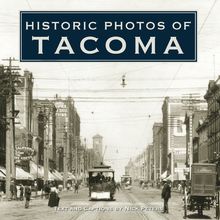Historic Photos of Oregon , livre ebook
119
pages
English
Ebooks
2010
Vous pourrez modifier la taille du texte de cet ouvrage
Obtenez un accès à la bibliothèque pour le consulter en ligne En savoir plus
Découvre YouScribe en t'inscrivant gratuitement
Découvre YouScribe en t'inscrivant gratuitement
119
pages
English
Ebooks
2010
Vous pourrez modifier la taille du texte de cet ouvrage
Obtenez un accès à la bibliothèque pour le consulter en ligne En savoir plus
Publié par
Date de parution
01 février 2010
Nombre de lectures
1
EAN13
9781618584205
Langue
English
Poids de l'ouvrage
11 Mo
Known for its natural beauty, Oregon has a unique and remarkable history. During the sixteenth century, European explorers sighted the Oregon coast and wrote about it. The region would be opened to settlement through the Hudson’s Bay Company and later as a result of the Lewis and Clark Expedition of 1805. By 1859, the Oregon Territory was set to join the Union as the 33rd state.
Over the next two centuries, the opening of navigable rivers and bays to steamships, the arrival of the railroads, and in the twentieth century the advent of roads and highways helped cities like Portland, Eugene, Salem, and Medford, as well as the state’s smaller communities, grow and prosper. The pioneers and settlers who came to the region worked at logging, lumber milling, fishing, farming and ranching, mining, and salmon canning.
Nearly 200 images, all published in vivid black-and-white with captions and introductions, make Historic Photos of Oregon a compelling look at the history of this intriguing and picturesque state.
Publié par
Date de parution
01 février 2010
Nombre de lectures
1
EAN13
9781618584205
Langue
English
Poids de l'ouvrage
11 Mo
HISTORIC PHOTOS OF
OREGON
T EXT AND C APTIONS BY W ILLIAM C. S TACK
A panorama of Portland showing the city as it appeared around 1923, with Mount Hood in the distance. By the 1920s, most urban Oregonians had electricity in their homes. In contrast, two-thirds of rural Oregonians still did not have electricity by 1930.
HISTORIC PHOTOS OF
OREGON
Turner Publishing Company
200 4th Avenue North Suite 950
Nashville, Tennessee 37219
(615) 255-2665
www.turnerpublishing.com
Historic Photos of Oregon
Copyright 2010 Turner Publishing Company
All rights reserved.
This book or any part thereof may not be reproduced or transmitted in any form or by any means, electronic or mechanical, including photocopying, recording, or by any information storage and retrieval system, without permission in writing from the publisher.
Library of Congress Control Number: 2009933007
ISBN: 978-1-59652-556-6
Printed in China
10 11 12 13 14 15 16-0 9 8 7 6 5 4 3 2 1
C ONTENTS
A CKNOWLEDGMENTS
P REFACE
E ARLY I NHABITANTS AND N EWCOMERS (1860-1899)
C HALLENGES AND O PPORTUNITIES (1900-1919)
B ETWEEN THE W ARS (1920-1940)
T HE W AR Y EARS (1941-1945)
V IGNETTES OF M ODERN T IMES (1946-1971)
N OTES ON THE P HOTOGRAPHS
A Junior Chamber of Commerce streetcar advertises Fire Prevention Week in Portland.
A CKNOWLEDGMENTS
This volume, Historic Photographs of Oregon , is the result of the cooperation and efforts of many individuals and organizations. It is with great thanks that we acknowledge the valuable contribution of the following for their generous support:
Library of Congress
University of Oregon Library
The writer would also like to thank these individuals for their assistance in making this book possible:
Mary A. Lindsley
Rebecca V. Shoemaker
Madeleine J. Stack
P REFACE
The state of Oregon presents a compelling story, and the effort to tell that story in 200 photographs and captions poses a challenging task. This pictorial history of Oregon is an attempt to present the main political, cultural, and economic themes in the state from the 1860s to the 1970s, chronicling the efforts of individuals, both well known and obscure, who have made Oregon what it is today. Early on, the region was home to the Nez Perce, Kalapuya, Umpqua, Klamath, and Chinook. After settlers arrived, Oregon became known for its economic opportunities, most notably in farming, mining, fishing, canning, ranching, and logging. Oregon achieved statehood in 1859, and from that year forward, the history of the state was marked by the coming of the railroads, an abundance of natural resources, Bonneville Dam, entrepreneurs, immigrants, labor difficulties, and a panoply of fascinating characters and events that together would begin to shape its colorful portrait as one of today s fifty states in the union.
The nearly 200 images presented here include several photographs by two of America s most famous photographers, Edward S. Curtis and Dorothea Lange. Curtis s photographs of the Chinook, Klamath, Umatilla, and Cayuse tribes in southern and eastern Oregon illustrate their dress and lifestyle with the haunting images of Crater Lake, the forest, and Klamath Basin and give a keen view of the area. Dorothea Lange s images of southern and eastern Oregon during the Great Depression give the viewer a glimpse of the hardscrabble lives and poor living conditions common among Americans living through the era. Lange s photographs also convey a brighter side to the era, depicting the daily lives of average rural and urban Americans in a way that shows their inner strength, pride, and joy.
The photographs in this book are organized into five chronological eras. The first section covers the period from the 1860s to 1899. Encounters between early Americans and the settlers moving into their ancestral lands are chronicled in these images. The second section spans the period from 1900 to 1919 and focuses on the development of river, railroad, fishing, timber, and agricultural commerce, which helped Oregon s population to expand in the twentieth century. During this era, Oregon was attempting to deliver a message of its importance to the rest of the United States. The third section concentrates on the period between the world wars, from 1920 to 1940. New rail transportation, New Deal building projects, and highways are shown as the state pursued growth during the twentieth century. The fourth section focuses on the World War II era, from 1941 to 1945. This section shows the growth of the Pacific Northwest and its connections to the popular culture of the western United States of that day. Oregon retained its rural flavor through such events as Fourth of July parades and carnivals. In contrast, the war effort required Oregonians to sacrifice, contributing to the defense of the nation through building ordnance depots, ships at the Kaiser Shipyards, and other work. The final section of the book samples the postwar era from 1946 to 1971. The images in this section illustrate subjects like the destruction of Celilo Falls on the Columbia River, and the social, cultural, economic, and technological changes of the era that affected the state.
With the exception of touching up imperfections that have accrued with the passage of time and cropping where necessary, no changes to the photographs have been made. The focus and clarity of many images is limited by the technology and the ability of the photographer at the time they were taken.
It is hoped that this collection of photographs will give the reader the rare opportunity to see the natural beauty of remarkable and unique Oregon, and how it fits into the overall history and culture of the United States.
- William C. Stack
Surveying crews helped determine the routes railroad lines would follow. Posing for a group shot beside their vehicles and equipment, this crew is at work surveying a route between Grants Pass, Oregon, and Crescent City, California.
E ARLY I NHABITANTS AND N EWCOMERS
(1860-1899)
The historical origins of the land that became the state of Oregon begin with the early Americans who populated the region for 10,000 years prior to the coming of other peoples. Early European explorations began with rumored sightings by the Spanish and English from sailing ships during the sixteenth century. A little more than two hundred years later, the Lewis and Clark Expedition would make its way from St. Louis to the Pacific Ocean on behalf of a fledgling nation and President Jefferson.
During the early part of the nineteenth century, it appeared that the Oregon Territory might become part of the British Empire. Fort Vancouver, on the Washington side of the Columbia, was the headquarters of Britain s Hudson s Bay Company, until 1846, when it moved to Victoria, British Columbia. Soon afterward, the 49th parallel was designated the boundary between Canada and the United States.
By the 1840s, thousands of pioneers were coming to the area on the Oregon Trail. A decade later, discord between settlers and the indigenous inhabitants they encountered would result in a series of wars that reached into the 1870s, culminating in the federal government s removal of Chinook, Klamath, and other groups to reservations. The photographs in this first section chronicle the early inhabitants of Oregon and settlement by immigrating pioneers, focusing on contact between peoples, economic development, and everyday life during the era. The images in this chapter also detail the role that the lumber industry, agriculture, fishing and salmon canning, the railroad, steamships, and the river began to play in the development of the state. Of paramount importance, the building of the railroad by Ben Holladay, Henry Villard, and others opened the region to commerce with the rest of the United States.
During the nineteenth century, Chinese, Japanese, and Latino immigrants as well as Europeans settled in the state, working in lumber mills and mines, building railroads, and pursuing fishing and agriculture. African-Americans who came to Oregon during the era often worked as Pullman porters and laborers for the railroad. All settlers, and these groups in particular, faced many challenges as they assimilated into the culture and forged the road to prosperity for the generations of Oregonians to follow in the twentieth century.
Encampment on the Columbia River, near the Dalles, 1860. Native Americans believed that the influence of nature was paramount in their lives, giving them food, clothing, shelter, implements, and weapons.
Two hunters with dead elk in the Coast Range Mountains. Wildlife was plentiful and hunters killed for food as well as sport. The Coast Range runs parallel to the Oregon coast and extends from the Columbia River south into Coos County. The Klamath Mountains run to the south of the Coast Range. The average elevation of the Coast Range is 1,500 feet above sea level, and the tallest peaks are Saddle Mountain (3,283 feet) and Mary s Peak (4,097 feet).
A family camping trip reportedly near the town of Heppner. The great majority of settlers to Oregon came with large extended families and kept these ties once they arrived. Farm families did not travel much, and people usually wed others who lived in the same area.
Fishing was a popular recreational activity on the Columbia River. By the 1880s, recreational, gill-netters, and commercial fishermen were experiencing a decline in catches brought on by overfishing.
The various tribes of Native Americans were concentrated on reservations and taught various skills focused on farming and trades. Here a group of students learn blacksmithing.
This photograph taken in 1880 shows a police force on the Umatilla reservation. The Indian agent and his staff were responsible for assimilating Native Americans into the surrounding culture. The agent s tactics consisted of force, persuasion, example, and cajolery. Resistance among tribes was widespread.
In 1851, the














